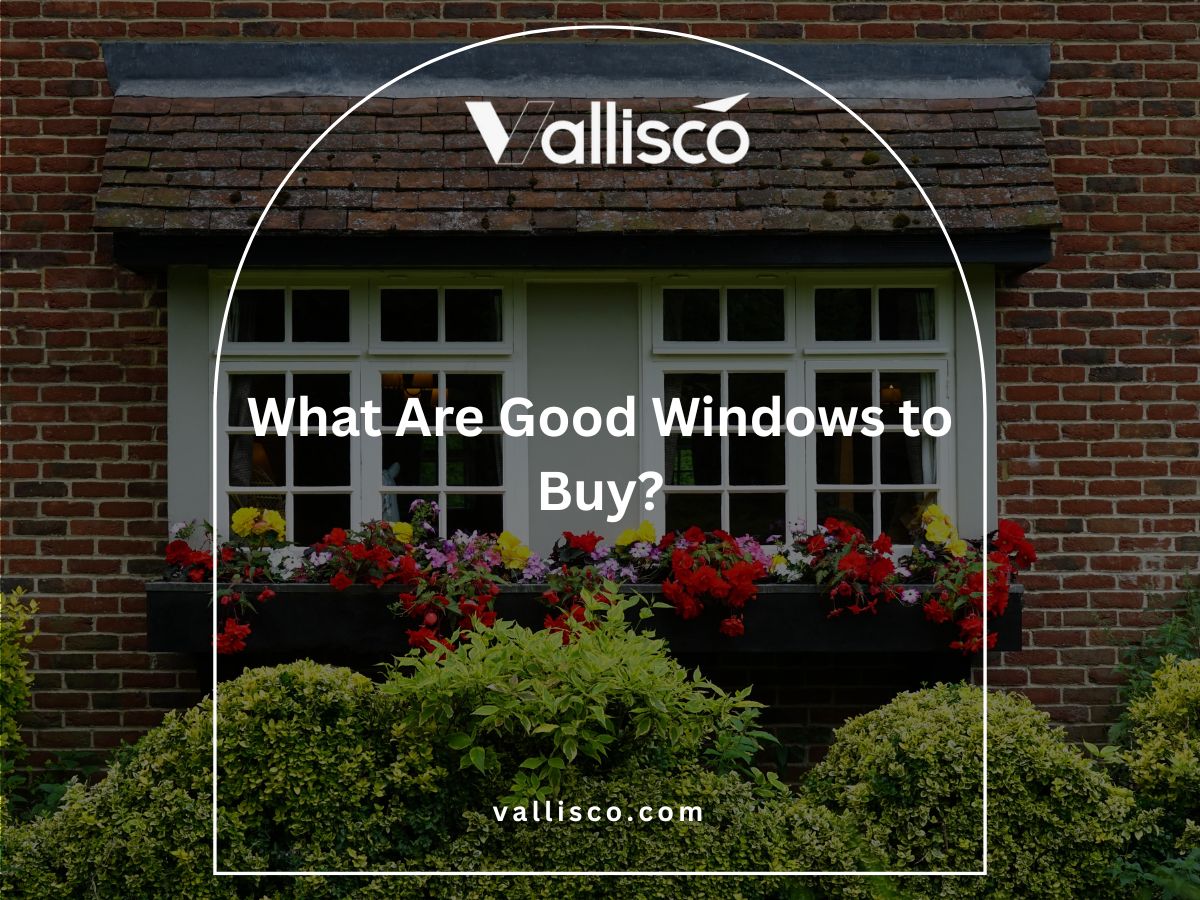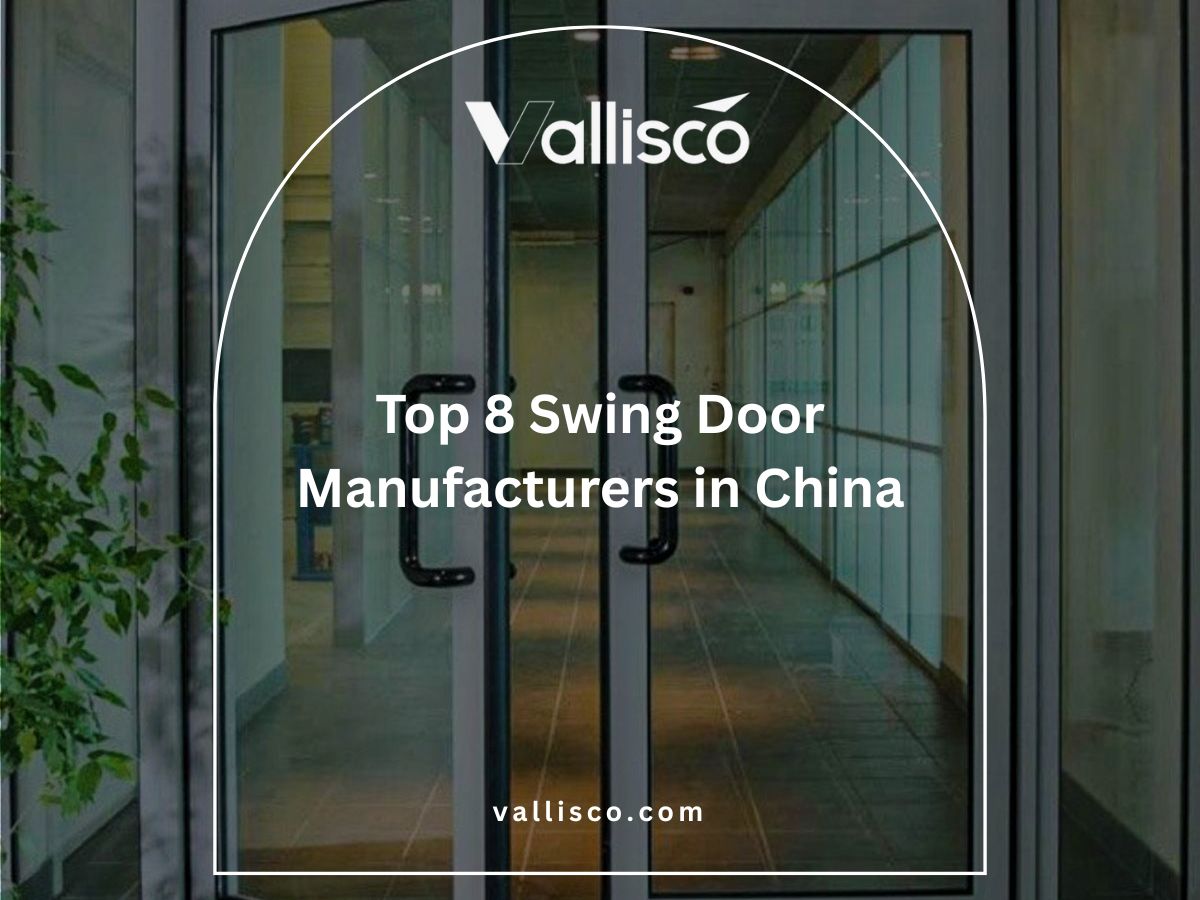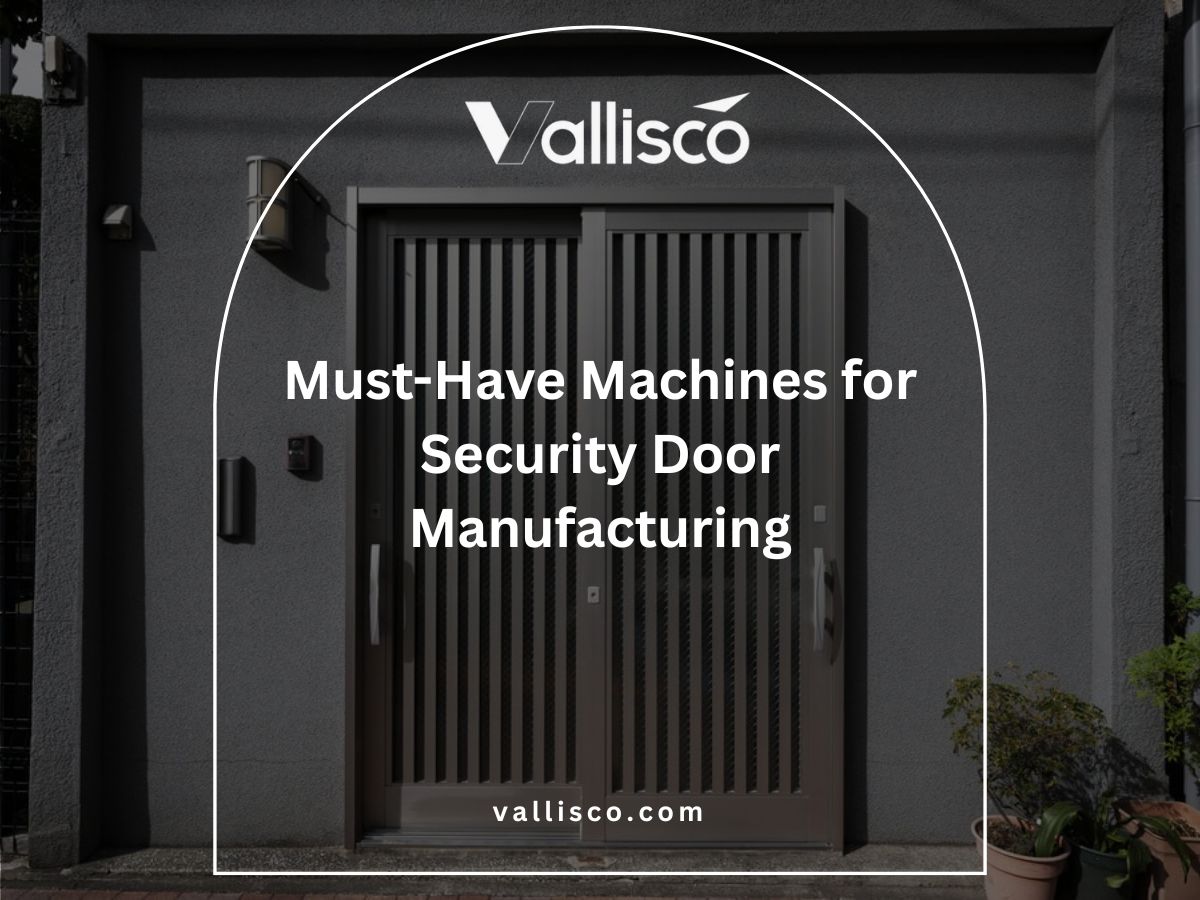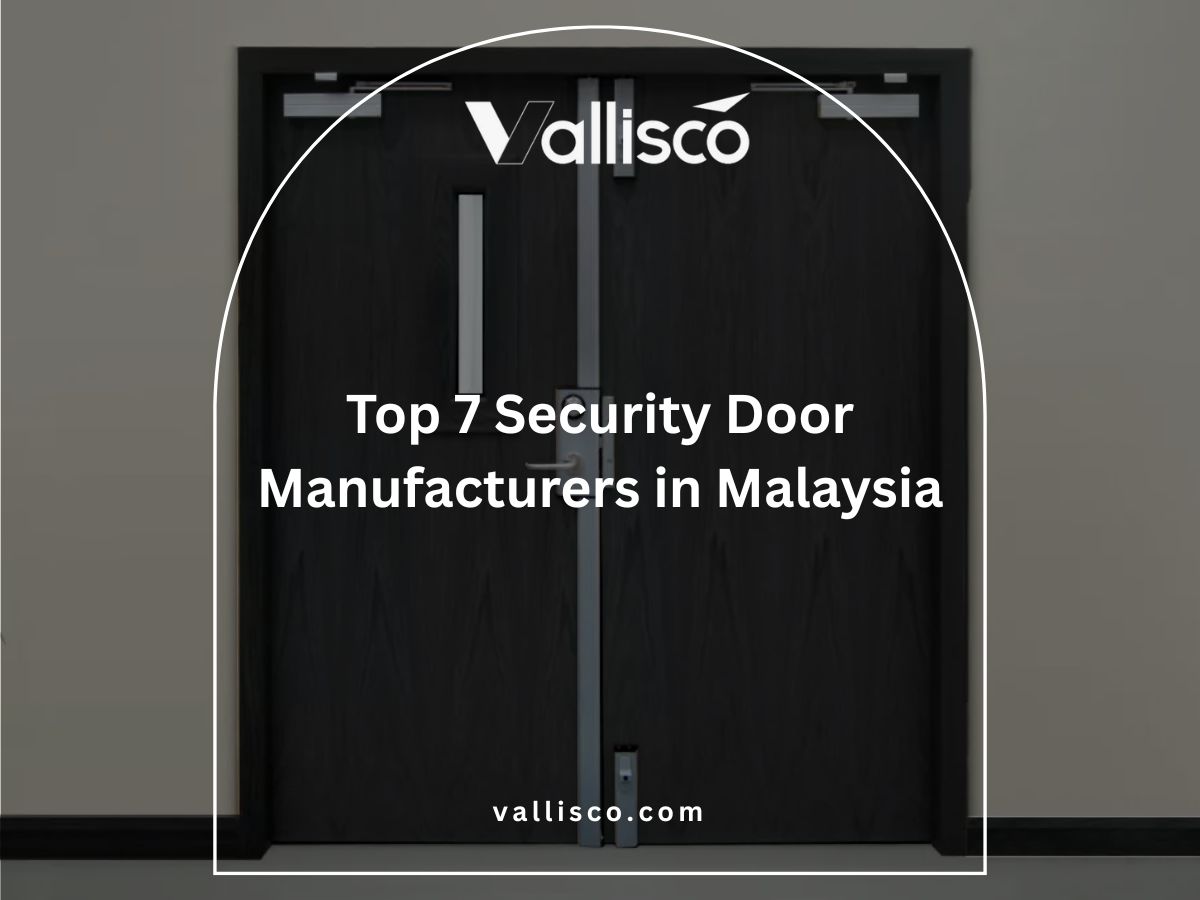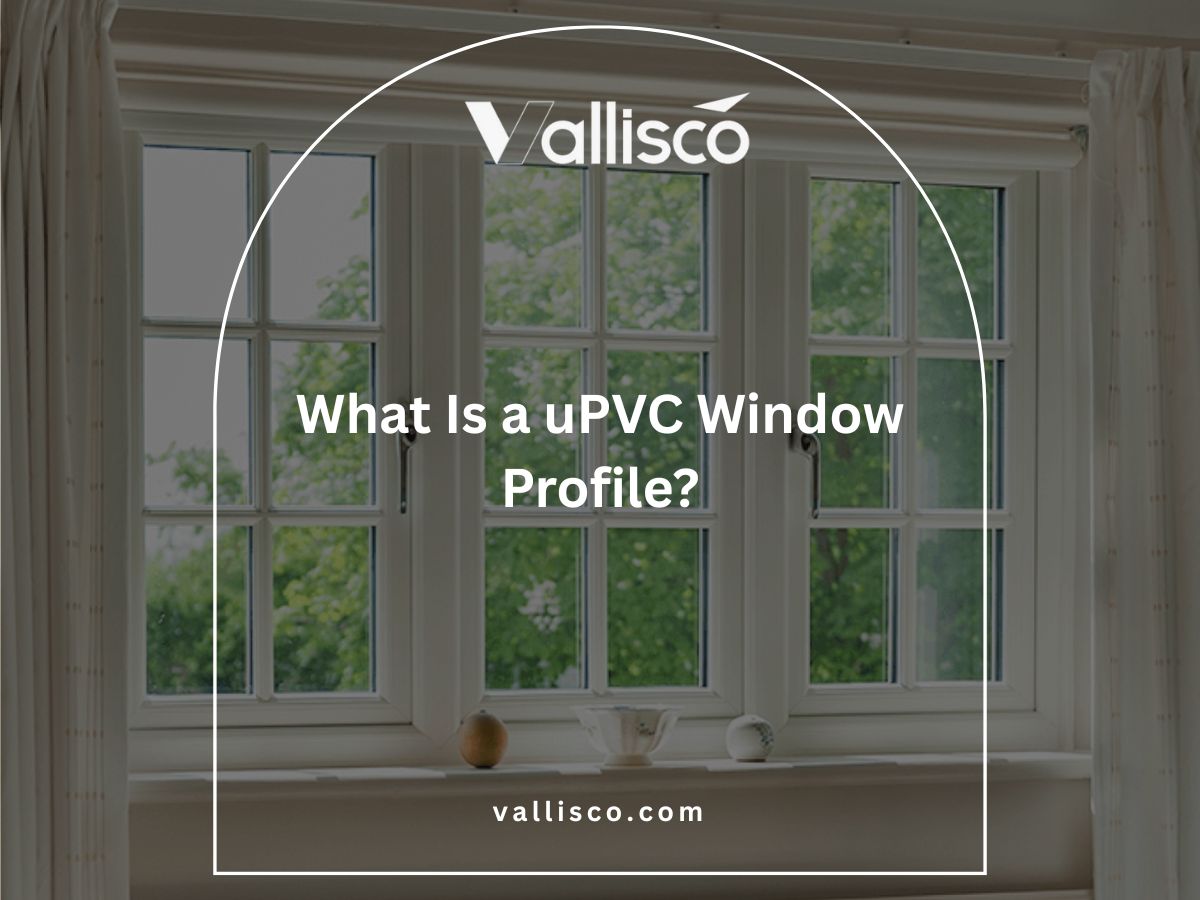I once had a client who ran a small hotel. Their automatic sliding door broke down mid-winter guests had to shove it open just to get inside.
That moment stuck with me. A door may seem small, but when it fails, it causes real problems for your business.
Over the years, I’ve worked with contractors, hotel managers, and villa owners looking for the right automatic doors. I’ve seen which ones hold up and which ones don’t.
This list will walk you through 10 different types of automatic doors. You’ll learn how each one works, where it fits best, and what to avoid.
Doors can make or break the first impression.
So let’s get down to it!
Quick Comparison Chart
Still not sure where to begin? Let’s take a quick peek at how each automatic door type stacks up before we dive deeper.
| Door Type | Best Used In | Key Benefits | Limitation / Not Ideal For |
| Sliding Doors | Hotel entrances, villas, shops | Saves space, clean look, hands-free operation | Doesn’t seal well in extreme weather |
| Swing Doors | Small inns, interior offices | Easy to install, familiar feel, affordable | Needs space to swing, less modern appearance |
| Revolving Doors | High-end hotels, office towers | Energy efficient, great first impression | Not friendly for luggage or wheelchair users |
| Folding (Bi-Fold) Doors | Greenhouses, garden patios, pool areas | Opens wide, saves wall space, stylish | Can rattle in wind, needs regular cleaning |
| Hermetic Sealing Doors | Labs, spas, climate rooms | Strong air control, noise reduction, secure seal | Too expensive or overbuilt for general use |
| Telescopic Sliding Doors | Narrow hallways, tight commercial spots | Opens wider in small areas, smooth operation | Higher cost and more moving parts |
| Breakout Sliding Doors | Hotels, public buildings, event spaces | Doubles as emergency exit, modern look | Heavier frame, more complex hardware |
| Curved Sliding Doors | Resorts, luxury storefronts | Stunning appearance, smooth guest flow | Expensive, needs large footprint |
| Industrial Doors | Warehouses, service zones, greenhouses | High durability, fast operation, insulated panels | Loud, not guest-facing, basic look |
| Glass Automatic Doors | Lobbies, lounges, guest entrances | Open feel, modern, lets in light | Needs frequent cleaning, less privacy |
Now let’s take a closer look at each type so you can decide what truly fits your space.
1. Sliding Automatic Doors
Sliding automatic doors open sideways along a track when triggered by motion. They’re commonly used in places where hands-free entry is helpful and space is limited. You’ll often find them in commercial lobbies, resort patios, or busy walkways where people come and go frequently.
Key Features
- Sensor Activation: These doors use motion sensors to detect when someone approaches. They open and close automatically without the need for buttons or handles.
- Space-Saving Panels: Panels slide horizontally instead of swinging out. This makes them a good choice for narrow walkways or small reception areas.
- Flexible Materials: Sliding doors are available in full glass, framed glass, or aluminum. This gives you visual and structural options depending on your building’s look and needs.
- Access Integration: Most models can connect to access control systems like keycards or facial recognition. This adds a layer of control without needing to change the door’s structure.
- Built-In Safety: Many sliding doors include safety features like anti-pinch sensors and emergency break-away modes. These help protect both the door and the people using it.
Pros and Cons
Pros
- Clean Appearance: The streamlined design blends easily with most commercial spaces. It creates a professional, welcoming first impression.
- User-Friendly: Guests and staff don’t need to push or pull. It’s especially helpful for high-traffic areas or where accessibility matters.
- Minimal Obstruction: Since the panels slide parallel to the wall, they don’t block walkways or furniture. This helps keep foot traffic smooth and efficient.
Cons
- Limited Sealing: These doors don’t close as tightly as other options. That can lead to drafts or energy loss in temperature-controlled areas.
- Maintenance Needs: Sensors, tracks, and rollers need to be checked and cleaned regularly. Dirt or misalignment can cause delays or noise.
- Low Security: They’re not ideal for areas that require strong protection. Most sliding doors are easier to force open than other types.
Sliding automatic doors are practical when you need simple, space-conscious access without complex installation. Vallisco offers sliding door systems that are built for daily traffic, clean design, and smooth operation ideal for business environments just like yours.
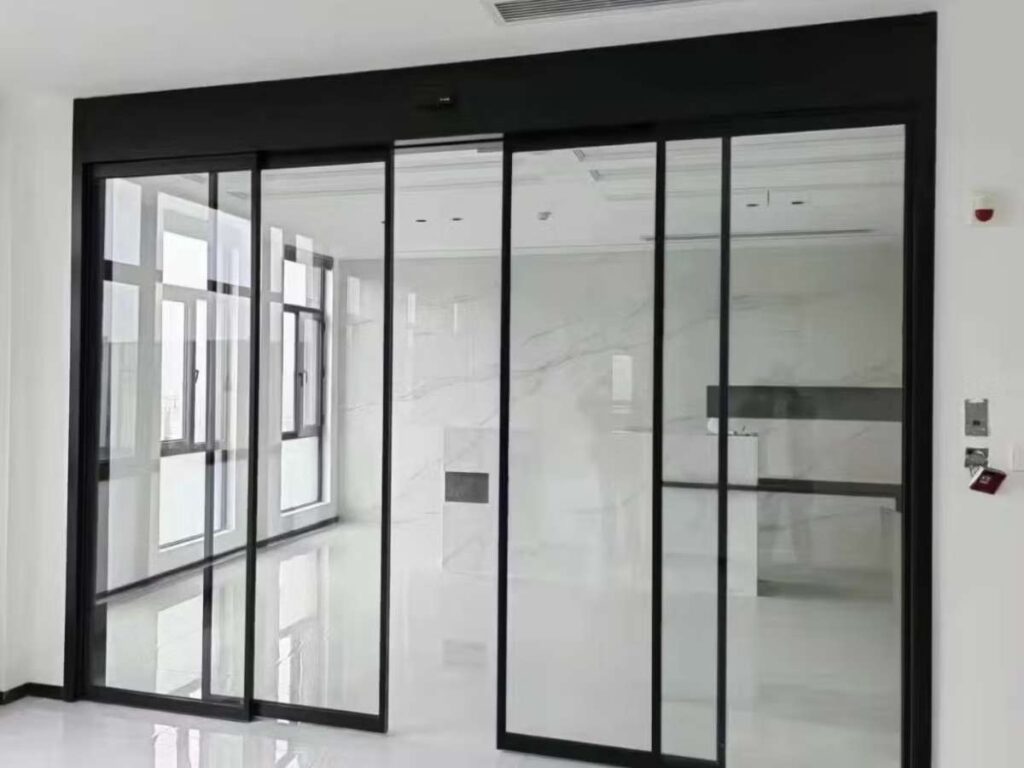
2. Swing Automatic Doors
Swing automatic doors open inward or outward on hinges, powered by a motorized arm. They’re often found in small inns, older buildings, or interior entryways where the layout favors a traditional door motion.
Key Features
- Motorized Hinges: The door swings open using an automatic operator mounted above or beside the frame. Activation can be through sensors, push buttons, or access cards.
- Single or Double Leaf: Available as single-panel or double-panel doors. This gives flexibility depending on how wide an opening you need.
- Manual Override: Most models include a manual open feature in case of power failure. It keeps traffic moving without causing confusion.
- Low-Energy Settings: Some units can be programmed to open slowly and partially. This is helpful for quieter environments or when noise is a concern.
- Simple Installation: In many cases, swing doors can be retrofitted into an existing manual doorway. That saves time and cost during upgrades.
Pros and Cons
Pros
- Cost-Effective Setup: These doors are generally more affordable to install than sliding or telescopic systems. They’re a good fit for lower-traffic areas.
- Familiar Design: Most people know how to use a swing door without hesitation. This can reduce friction for guests unfamiliar with automated systems.
- Flexible Controls: Works with a wide range of activation methods. You can pair it with motion sensors, access pads, or even remote switches.
Cons
- Space Requirement: Since the door swings open, it needs clear space to operate. That can interfere with furniture, displays, or walkways.
- Less Modern Look: Compared to sliding or curved doors, this design may feel dated. Some businesses prefer a more streamlined aesthetic.
- Draft and Noise Gaps: Hinged doors don’t always close flush. This can let in air, sound, or smells from surrounding areas.
I’ve worked on a few retrofits where the owners didn’t want to change the frame or floor layout. In those cases, swing doors did the job without drama and sometimes, that’s exactly what a space needs.
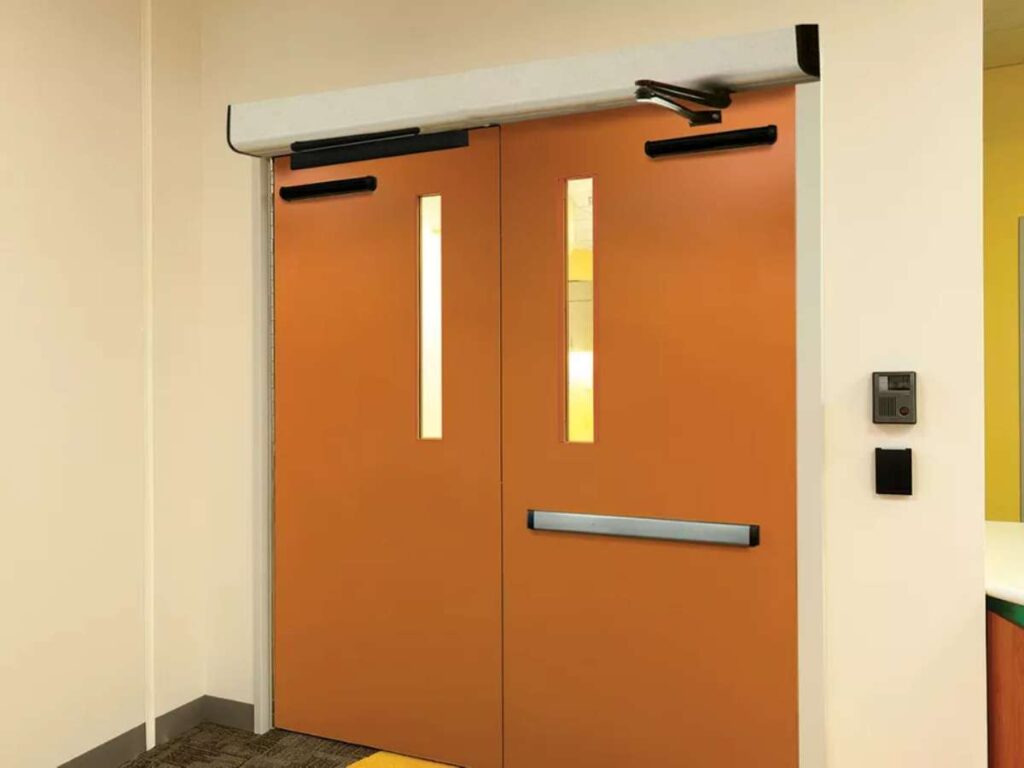
3. Revolving Automatic Doors
Revolving automatic doors rotate in a circular motion and create compartments that allow people to enter and exit without opening the entire doorway. You’ll often see them at high-traffic entrances where appearance and climate control both matter.
Key Features
- Rotating Drum: The door moves in a full or partial circle, dividing space into separate walk-in sections. It’s driven by a slow-turning motor that keeps people moving at a steady pace.
- Climate Buffer: This design helps separate outdoor and indoor air. It reduces energy loss from heating or cooling systems.
- Traffic Control: People enter one at a time, naturally slowing the pace. This makes it easier to manage large volumes without bottlenecks or door collisions.
- Framed Glass Construction: Most models are made from heavy-duty glass with metal framing. That keeps things durable while still looking upscale.
- Security Upgrade Options: Some versions include card-based access or locking systems. This allows selective entry during off-hours or restricted events.
Pros and Cons
Pros
- Energy Efficient: Because the door is always partly closed, it helps reduce air exchange. That’s useful for temperature-sensitive buildings.
- Elegant Look: A revolving door gives a strong first impression. It can elevate the look of an otherwise simple building front.
- Flow Control: Spaces people out without making them wait in line. That helps reduce noise and crowding near the entrance.
Cons
- Hard to Navigate: Not ideal for people carrying luggage, carts, or assistive devices. Some guests may hesitate or feel uncomfortable using it.
- High Upfront Cost: Materials and installation tend to be more expensive. It’s usually not a good fit for smaller or lower-traffic properties.
- Space Demanding: Requires a wider opening than other door types. That can be limiting for renovations or compact entries.
I’ve seen revolving doors impress visitors even before they step inside. But I’ve also seen guests avoid them entirely so if you go this route, make sure it matches how your space is actually used.
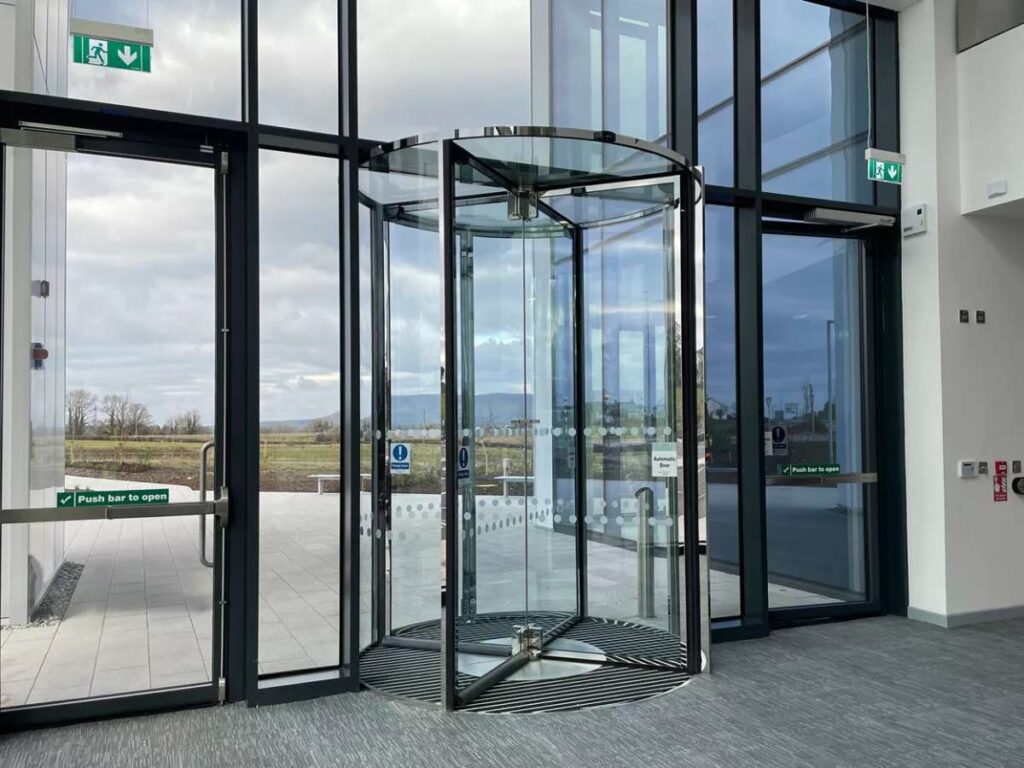
4. Folding Automatic Doors (Bi-Fold Doors)
Folding automatic doors open by stacking hinged panels to the side, either partially or fully. You’ll see them used in open-air restaurants, luxury villas, and greenhouses where blending indoor and outdoor space matters.
Key Features
- Hinged Panel System: The door folds along a central track, allowing it to tuck away when open. This design offers maximum clearance in a compact footprint.
- Compact Operation: Panels don’t need space to slide along the wall or swing outward. That makes it easier to work in tight or irregular spaces.
- Full Opening Access: When fully opened, the doorway becomes almost completely clear. It’s ideal for large equipment, open-air dining, or event access.
- Material Range: Available in insulated glass, aluminum, or hybrid frames. This lets you match durability with appearance based on the environment.
- Flexible Mounting: Can be mounted on the surface or recessed into the floor. That choice depends on whether you want a seamless threshold or easier install.
Pros and Cons
Pros
- Wide Openings: Folding doors allow you to open nearly the full width of the space. That’s useful for moving goods, refreshing air, or welcoming guests.
- Stylish and Modern: They create a sleek, open feel that many luxury spaces look for. It’s a popular choice for areas that transition between inside and out.
- Efficient Use of Space: The folding motion doesn’t need wall clearance like sliding doors do. You can install them in corners, tight patios, or angled walls.
Cons
- Moving Parts: With multiple hinges and guides, they need more attention during routine checks. Dust or debris can cause sticking or uneven folding.
- Not Ideal for High Wind: If placed in an exposed area, wind can catch the panels mid-motion. That may cause stress on the hinges or motor.
- Limited Insulation: Most folding designs don’t seal tightly. They’re better for temperate zones or occasional use, not all-day climate control.
There’s something satisfying about watching these doors fold open all the way like pulling back a curtain. But I’ve also had clients who forgot to factor in wind exposure, and the panels just kept rattling all day.
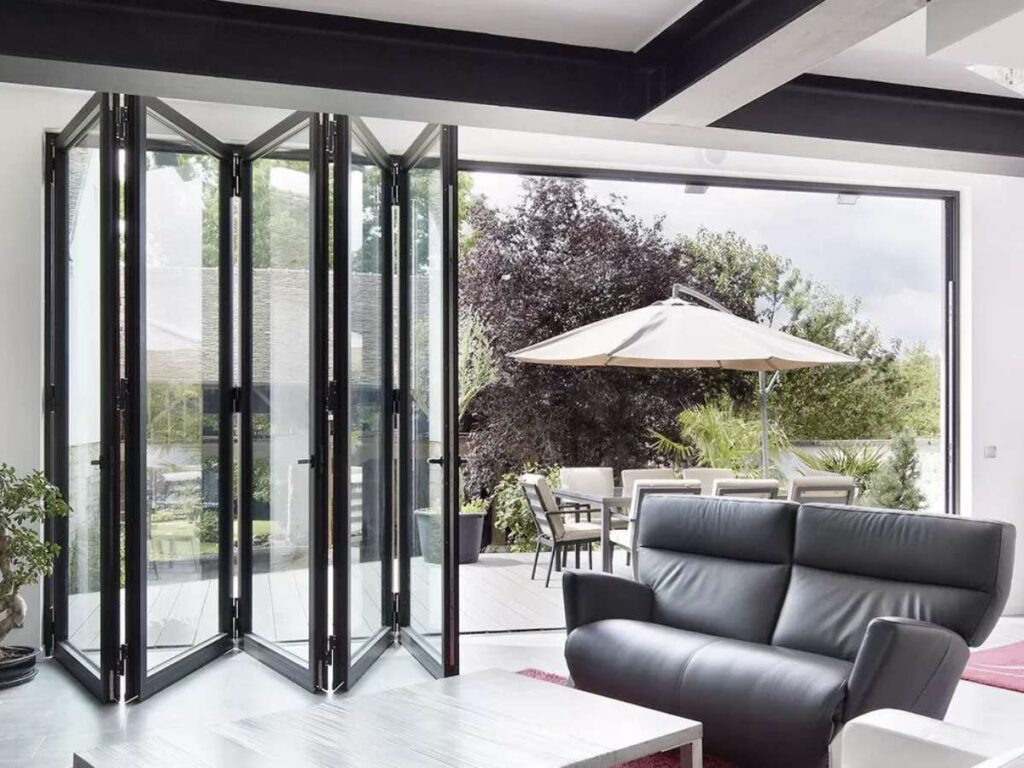
5. Hermetic Sealing Doors
Hermetic sealing doors are built to close tightly against their frames, creating an air- and pressure-controlled seal. They’re used in rooms where cleanliness, temperature, or airflow needs to be controlled like clean labs, climate zones in greenhouses, or certain wellness areas in high-end resorts.
Key Features
- Tight Perimeter Seal: The door presses firmly into the frame when closed, leaving almost no gaps. This limits contamination, odors, or outside air from leaking through.
- Manual or Automated Operation: Some models slide, while others swing. Both options can be automated, depending on how space is used.
- Pressure Control Ready: Often used in positive or negative pressure rooms. These doors can help maintain internal pressure more effectively than standard types.
- Smooth Surface Construction: Typically made from stainless steel, powder-coated aluminum, or laminated panels. The flat, joint-free surface helps with sanitation and easy cleaning.
- Interlock System Compatible: Can be combined with double-door entry systems. One door won’t open until the other fully closes, improving control over airflow or access.
Pros and Cons
Pros
- Air Quality Control: Excellent for keeping out dust, allergens, or humidity. That’s essential in labs, food prep zones, and sensitive plant rooms.
- Durable and Low-Friction: Designed to handle frequent use without dragging or sagging. Materials resist corrosion and chemical damage.
- Reduces Noise Transfer: The sealed design also acts as a sound barrier. It helps maintain quiet in treatment areas or private spaces.
Cons
- Not Visually Inviting: These doors tend to look clinical or industrial. That may not suit guest-facing parts of a hotel or public space.
- Higher Installation Cost: Requires precision during installation. Misalignment can affect sealing performance and may need correction later.
- Overbuilt for General Use: Unless you have a specific air or sound control need, it’s more than what most businesses require. The added cost won’t pay off in everyday situations.
I’ve had clients in spa resorts and plant labs thank me for recommending these, especially when they needed a quiet, controlled room. But I’ve also seen them used where they weren’t needed just because they “sounded high-tech” and that usually led to regrets.
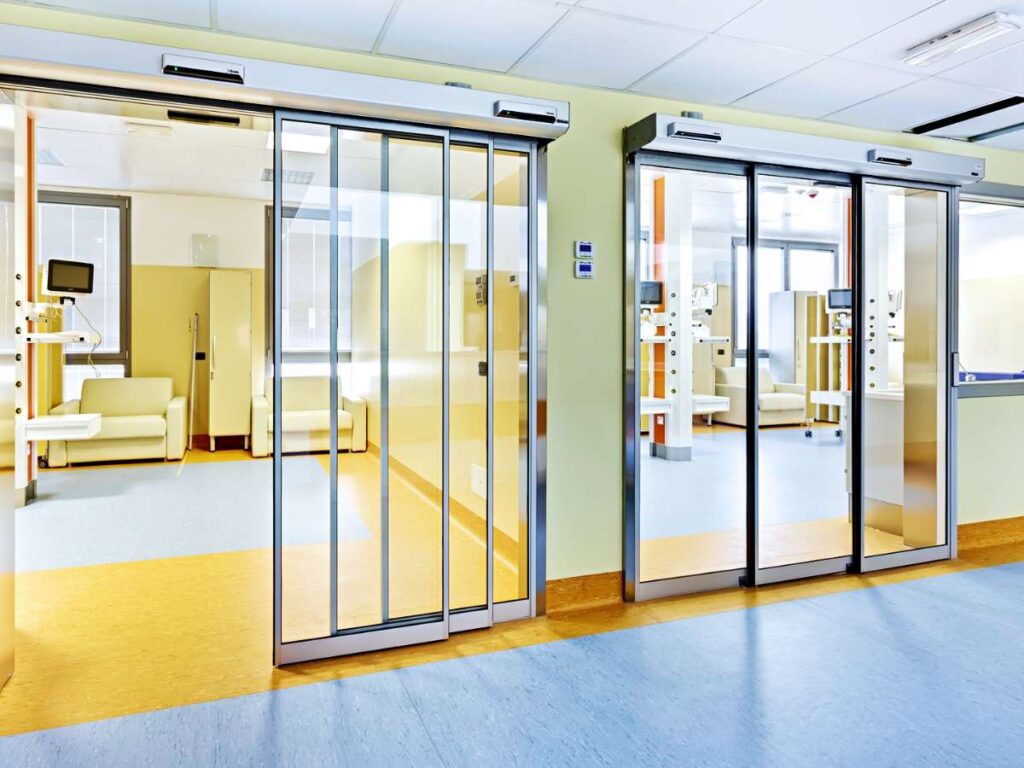
6. Telescopic Sliding Doors
Telescopic sliding doors use multiple panels that slide and stack behind each other to create a wider opening within a limited wall space. They’re especially helpful in hallways, hotel entrances, or public areas where you need more access room without altering the wall structure.
Key Features
- Multi-Panel Design: Instead of a single sliding panel, this door has 2 or more doors that collapse together. This increases the opening width without needing extra side space.
- Smooth Track System: Built with precision guides and rollers for quiet, coordinated motion. The panels move in sync to reduce wear and friction.
- Asymmetrical Options: Some setups allow for unequal stacking on one side. That’s useful when one wall has more clearance than the other.
- Sensor Activation: Works with standard motion sensors or access pads. It can also be adjusted for timed closing or partial openings.
- Framing Variants: Available in slim or full-frame models depending on design needs. You can match them with glass, metal, or mixed panel materials.
Pros and Cons
Pros
- Wider Clear Opening: Lets you open up more space without expanding the wall cutout. Ideal for busy entryways or shared public zones.
- Efficient in Tight Spaces: Perfect for locations where swing or traditional sliding doors won’t fit. Helps maintain smooth traffic flow.
- Flexible Mounting: Can be installed on single or double sides. That offers more layout options during design planning.
Cons
- More Moving Parts: With extra panels and tracks, it needs consistent upkeep. Misalignment can cause noisy or uneven movement.
- Higher Hardware Cost: Precision rollers and guides are more expensive than standard systems. You’ll also need qualified installers.
- Less Common Format: Not all suppliers carry this configuration. That may limit options or extend your lead time.
I’ve seen telescopic doors work wonders in boutique hotels where the entry felt too narrow for regular sliding doors. When used right, they give the illusion of space even when the structure says otherwise.
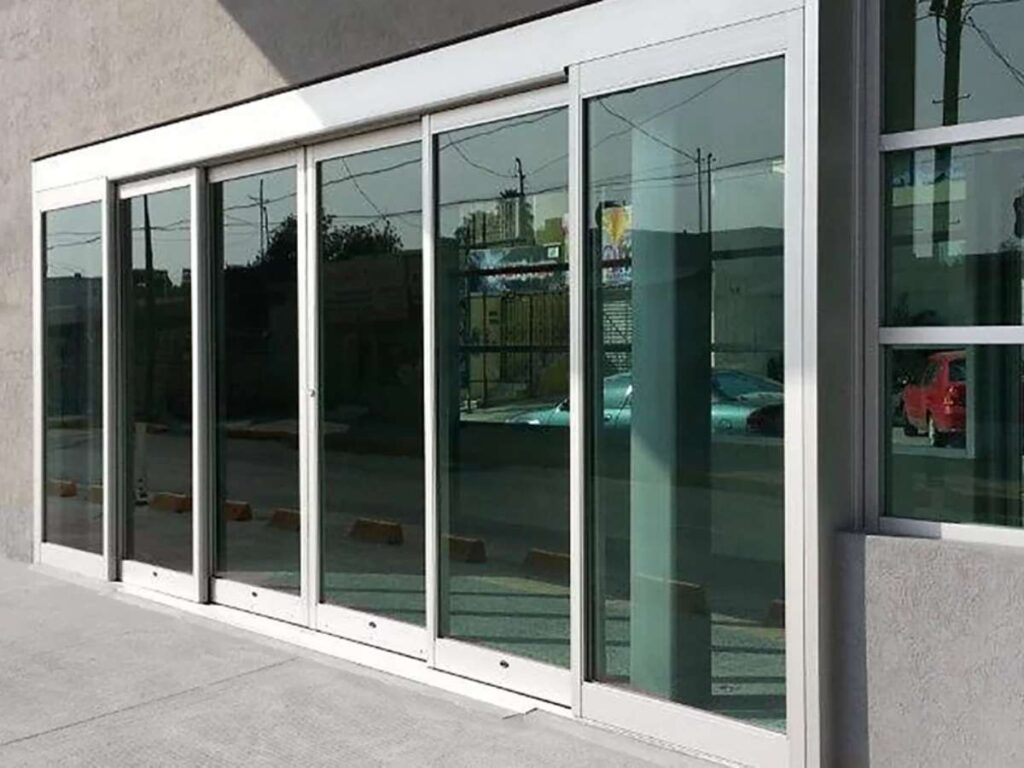
7. Breakout Sliding Doors
Breakout sliding doors function like standard sliding doors during normal use, but their panels can swing open manually in emergencies. This design gives you the look of a sliding door with the added benefit of quick egress when needed often required in code-compliant commercial buildings.
Key Features
- Dual-Function Panels: Panels slide open for daily traffic but can pivot outward when pushed. This allows a larger opening during evacuation or urgent access.
- Built-In Swing Hardware: Special hinges are integrated into the frame. The swing-out function only activates when pressure is applied during emergencies.
- Code-Compliant Design: Often required by fire or safety codes for public buildings. It provides clear escape routes in case automatic systems fail.
- Frameless or Framed Options: Available in all-glass or partially framed versions. That lets you match safety with architectural goals.
- Automatic + Manual Integration: Works with sensors, locks, and access systems just like regular sliding doors. But it can be bypassed instantly during emergencies.
Pros and Cons
Pros
- Emergency Access: Allows occupants to exit quickly if power goes out or the track system jams. Offers peace of mind in high-traffic public spaces.
- Safety Without Sacrificing Design: Keeps a modern appearance while still meeting safety rules. You don’t have to trade aesthetics for function.
- Flexible Configurations: Can be used on single- or double-panel entries. Fits a range of commercial layouts without major changes.
Cons
- More Complex Mechanism: With added swing function, hardware must be checked more often. Hinges and pivots may wear faster under regular pressure.
- Slightly Thicker Frames: The breakout function adds depth to the door assembly. That may stand out in minimalist or flush-mounted designs.
- Higher Initial Cost: Safety-rated models cost more than standard sliding doors. You’ll also need certified installation to stay compliant.
One hotel I worked with didn’t originally plan for this style until the fire safety inspection flagged their main entrance. They replaced the doors just in time for a major event and told me afterward it was worth every penny.
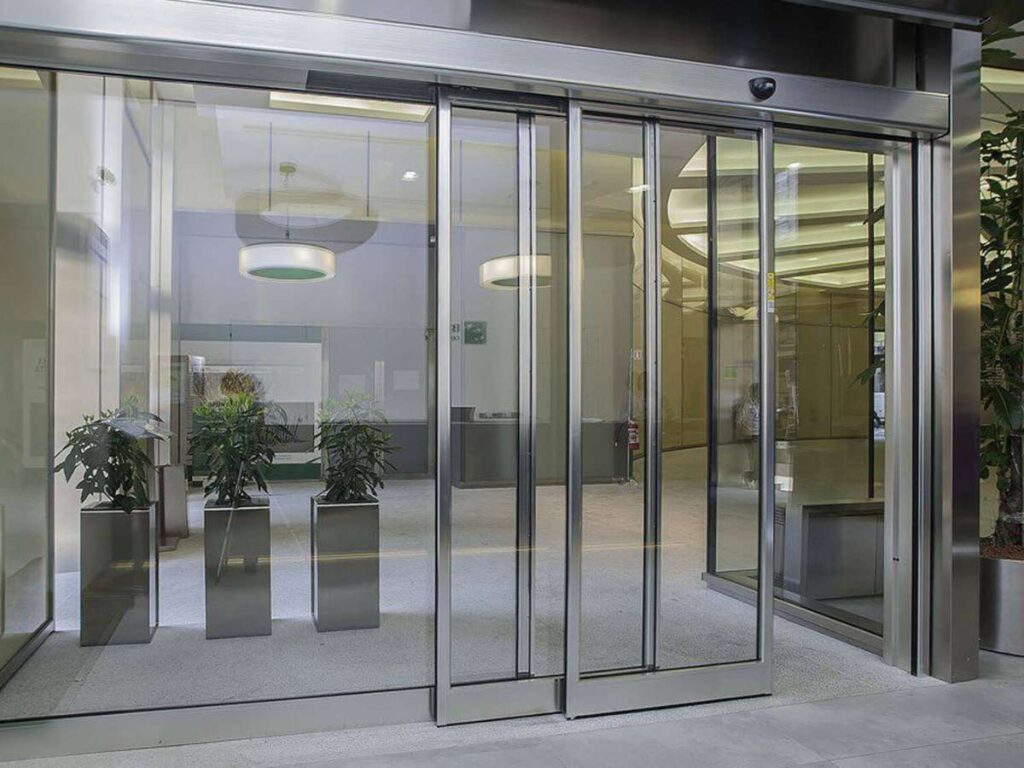
8. Curved Automatic Sliding Doors
This type of automatic door opens along a rounded path, creating a dramatic arc rather than a flat slide. It’s often chosen in places that want the entry itself to feel like part of the overall design—resorts, luxury villas, or high-end commercial spaces.
Key Features
- Arched Movement Track: Panels glide along a curved path rather than a flat line. This creates a soft, continuous motion that stands out from standard doors.
- Custom Radius Options: The curve can be shallow or more pronounced depending on the entry layout. That gives architects more control over appearance and flow.
- All-Glass Presentation: Many models come in frameless glass with minimal hardware. This enhances the open feel and lets natural light through without distraction.
- Sensor and Access Compatibility: Works with motion detectors, keycard systems, and touchless entry. Offers the same automation features as standard sliding doors.
- Entrance Framing: Can be installed as a full circular vestibule or just a curved front. Both create a strong impression when guests arrive.
Pros and Cons
Pros
- High Visual Impact: These doors instantly change how a building looks and feels. They add a sense of scale and modernity that standard doors can’t match.
- Smooth Guest Flow: The curved shape helps guide people naturally through the entrance. It reduces crowding and offers better directionality.
- Customizable Fit: Tailored to suit luxury layouts, unique buildings, or premium storefronts. It’s a flexible choice for high-end projects.
Cons
- Space Requirements: Needs a wider footprint than straight sliding doors. That may be a barrier for compact renovations or existing frames.
- Increased Cost: Custom glass, hardware, and design time add up quickly. Not ideal if budget is the top concern.
- Maintenance Access: Some parts may be harder to reach due to the curve. Repairs and track cleaning could take more time than standard systems.
I’ve had clients tell me their guests photographed the entrance before checking in and it was these doors that caught their eye. If first impressions matter in your business, this design might do more than your signage ever could.
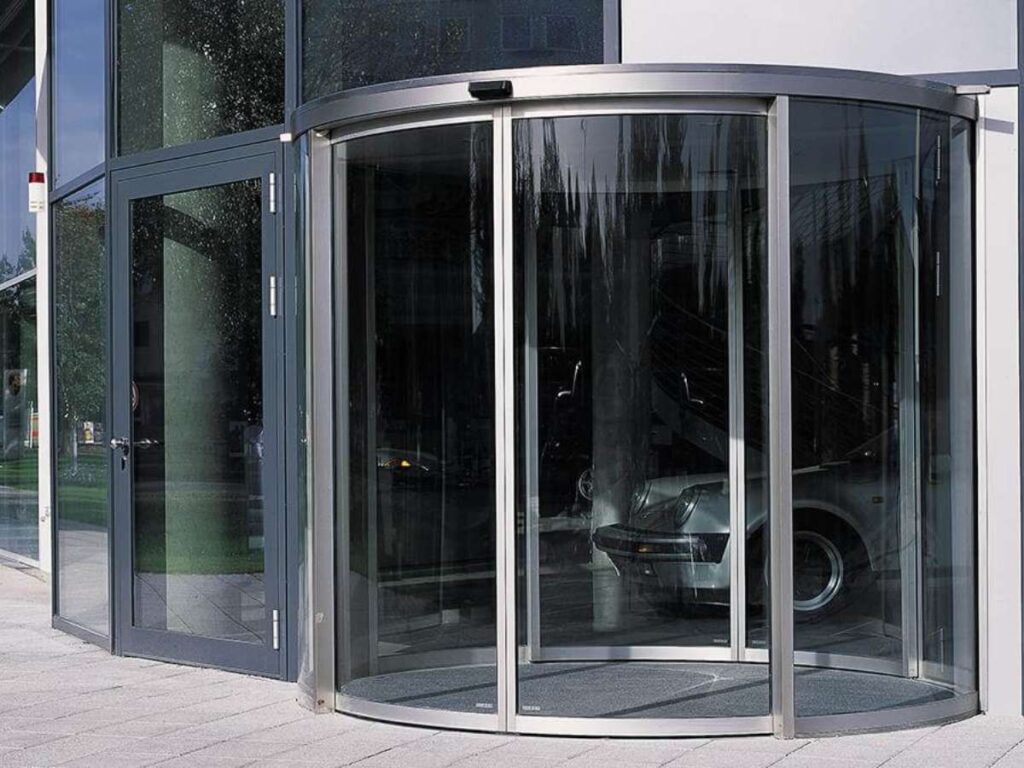
9. Industrial Automatic Doors
Industrial automatic doors are built for high-traffic zones where durability and speed matter more than design. They’re typically used in loading docks, utility corridors, warehouse spaces, and service entrances behind hotels or greenhouses.
Key Features
- Heavy-Duty Construction: Made with steel, reinforced aluminum, or impact-resistant panels. Built to take repeated use in rugged environments.
- High-Speed Operation: Opens and closes faster than standard doors. Helps reduce air exchange, save time, and support productivity in busy areas.
- Insulated Panels: Many models come with foam-core or thermal-layered panels. Useful for cold storage, greenhouse climate zones, or energy-saving needs.
- Manual Override System: Even with full automation, most doors include a chain or lever release. This keeps things moving if power cuts out.
- Weather and Pest Sealing: Seals line the edges to block wind, dust, or pests. Especially useful for food prep areas or outdoor-exposed structures.
Pros and Cons
Pros
- Built to Last: These doors are designed for tough conditions. They handle frequent cycles without wearing out quickly.
- Fast Access: Helps vehicles and workers move quickly through controlled zones. That improves flow and reduces downtime.
- Low-Maintenance Surfaces: Smooth finishes are easy to clean and resist corrosion. A big plus for agricultural or utility workspaces.
Cons
- Not Aesthetic-Focused: These doors prioritize function over design. They may not suit guest-facing areas or upscale entrances.
- Can Be Noisy: Speed and motor strength create more sound than light-use models. That could be a concern near quiet spaces.
- Installation Limitations: Requires proper alignment, clearance, and hardware. Not ideal for retrofits or soft structures like temporary walls.
I’ve had greenhouse operators tell me this was the one upgrade that actually made day-to-day tasks easier. If your goal is to move people, products, or equipment efficiently it’s hard to argue with this kind of utility.
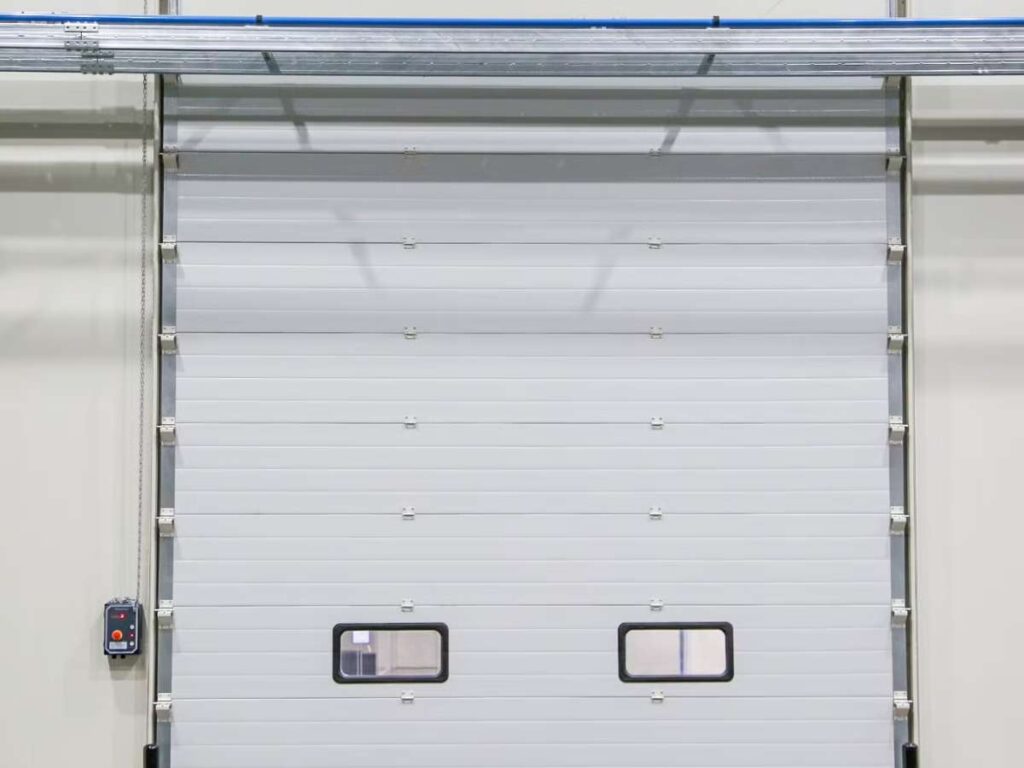
10. Glass Automatic Doors
Glass automatic doors bring in natural light and provide a clear view between inside and out. They’re often chosen for front-facing entrances in hotels, shops, lounges, or lobbies where visibility and atmosphere matter.
Key Features
- Full or Partial Transparency: Can be made fully transparent or frosted for partial privacy. Businesses can use the surface for branding or design accents.
- Framed or Frameless Options: Available with slim metal borders or clean frameless panels. The look can be modern, minimal, or matched to architectural elements.
- Sensor-Activated Movement: Uses standard motion sensors or card readers. Opens hands-free and closes automatically on a timer.
- Tempered or Laminated Safety Glass: Built to resist shattering and meet commercial safety codes. Some models also include UV protection or glare control.
- Custom Size Availability: Can be ordered in large-panel formats for wide openings. Useful for spacious lobbies or view-facing entrances.
Pros and Cons
Pros
- Modern and Open Feel: Keeps entryways bright and visually connected to the outside. This helps make spaces feel bigger and more welcoming.
- Easy Guest Flow: Automatic glass doors respond quickly and don’t require physical contact. They improve access without interrupting movement.
- Good Branding Opportunity: The surface can be used for subtle decals or signage. It supports wayfinding or identity without extra equipment.
Cons
- Frequent Cleaning Needed: Smudges, dust, and fingerprints show easily. Businesses need to budget time for glass maintenance.
- Limited Privacy: Even with tint or frosting, visibility may still be an issue in some locations. Not ideal for back-office or private use.
- Break Risk in Rough Areas: Though built to resist impact, glass isn’t suited for harsh environments. It’s better for polished public spaces than industrial zones.
I worked with a boutique hotel that replaced solid wood doors with full-glass panels and the entire front lobby felt lighter by the end of the day. Sometimes it’s not just what the door does, but how it makes the space feel when it’s open.
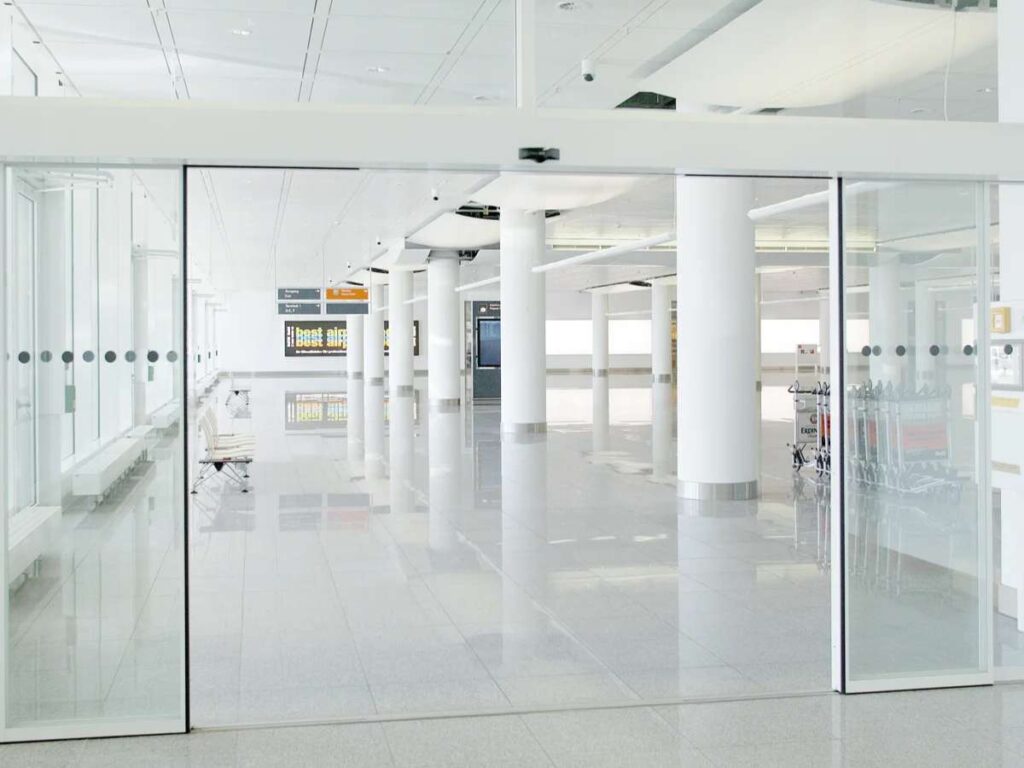
Final Tips Before You Choose Automatic Doors
Not every automatic door fits every space. I’ve seen businesses make quick choices then spend months dealing with noise, stuck panels, or guest complaints.
The right door should support how your space works. It needs to match your layout, traffic, and environment, not just the look you’re going for.
Here are the key things to think about:
- Traffic Use: Some doors are made for constant motion. Others are better for light use and fewer open-close cycles each day.
- Space Around It: Folding and sliding doors work well in tight areas. Swing doors need more clearance to move freely.
- Indoor or Outdoor: Outdoor entries need weather-resistant frames and strong seals. Interior doors can be lighter and quieter.
- Privacy vs. Visibility: Glass gives a clean, open feel. Solid panels give more privacy and noise separation when needed.
- Guest Experience: A door that moves smoothly leaves a good impression. If it jerks, sticks, or slams people remember that too.
I worked with a villa owner who had swing doors that looked great but got in the way. We replaced them with bi-fold panels, and the space opened up. If you’re planning something similar, Vallisco builds doors that fit how real spaces work.
Conclusion
That hotel I mentioned at the start? They fixed their door. No more slamming in winter. Guests walk in with ease now.
This guide gave you 10 options each built for different spaces, traffic levels, and goals. Now it’s your move.
Which door helps you run it better?
Your building deserves more than a generic entrance. Start with the right fit.
Vallisco makes doors that support your design, not fight against it.
Contact us today, we’ll help you choose one that works like it should.
Check Out These Additional Resources
Need more ideas? Browse through our extended range of products and discover something new:
Still haven’t found what you’re looking for? Don’t hesitate to contact us. We’re available around the clock to assist you.


